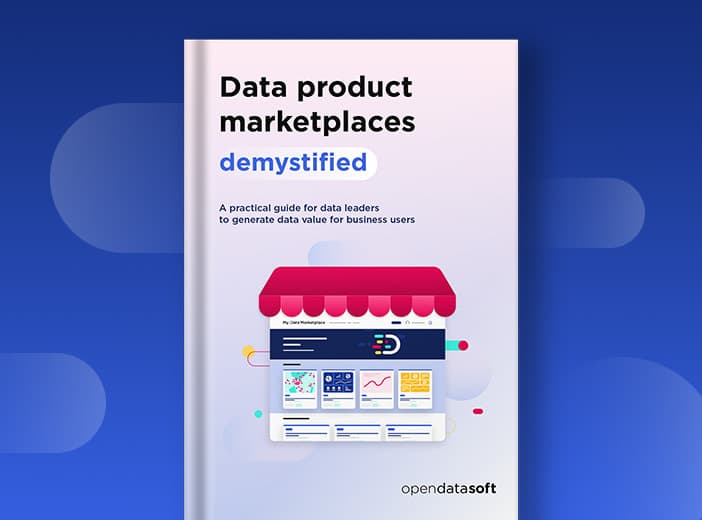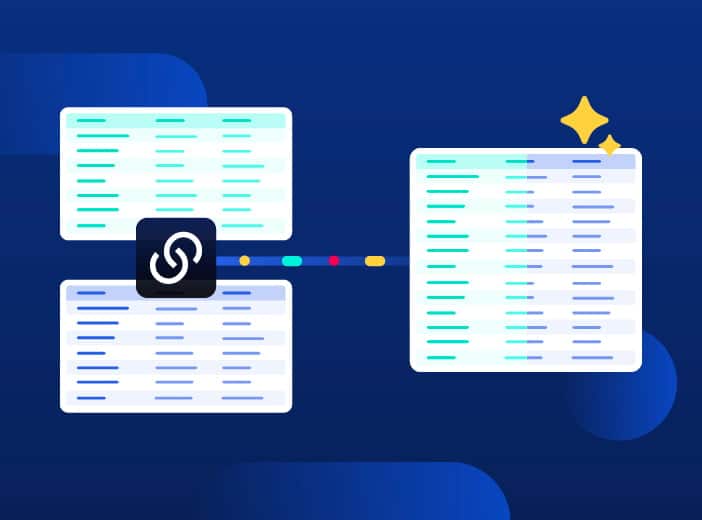What is an output port?
In an increasingly decentralized data and IT world built on modular data architectures, the data mesh and data product concepts are profoundly transforming the way we produce, govern and consume data. A specific technical feature is central to structuring this transformation: the output port. Often referenced in data-oriented architectures, the output port does much more than just output data. In this article, we explain what an output port is, what it is used for, how it fits into modern data architectures, and why it is essential for efficient, well-governed, and interoperable data flows.

Output port: not just an exit for data
An output port is a standardized interface exposed by a data product to make its data available to consumers. It represents the authorized, controlled, and documented way in which a data product shares raw, transformed, or enriched data with other systems, teams, or users.
Rather than sharing through a simple downloadable file or an improvised API, the output port is rigorously designed. It precisely captures and describes the data’s format, update frequency, quality guarantees, access rules, and conditions of use.
Why are output ports essential?
1. They standardize data product interfaces
The output port allows you to standardize the way a data product exposes its results. This facilitates integration with other products, tools or platforms, maximizing interoperability. In a data mesh environment, this standardization is vital.
2. They make clear what is available
Thanks to a well-defined output port, consumers know exactly what data is available, in what format, how often it is updated, and what rules govern its usage. This improves data discoverability and avoids misunderstandings and confusion.
3. They ensure secure and well-governed access
An output port is not just an open door for data to flow through. It is often combined with an access control system, authentication mechanisms, and audit trails. This allows data to be exposed in a secure manner that complies with regulatory and governance requirements.
4. They promote data reuse
By sharing data in a clear and consistent way via an output port, organizations encourage its reuse by other teams, projects or partners. Data can be reused without users having to request access each time they connect while technical teams don’t need to develop specific integrations.
The key elements of an output port
An effective output port is built on seven key structural elements:
- Name and description: what the output port contains, its purpose, and intended use cases
- Data schema: structure, types, validation constraints
- Output format: CSV, JSON, Parquet, REST API, Kafka stream, etc.
- Frequency and type of update: real-time, daily, weekly, batch, etc.
- Quality guarantees: completeness rate, delivery times, error tolerance
- Access conditions: roles, permissions, auditability
- Metadata: business context, origin, date of last update
What is the difference between an output port and a simple export or API?
The big difference between an output port and a simple data export or an ad hoc API lies in the implicit contract and the associated governance it contains. An output port:
- is documented
- is an integral part of the data product
- is maintained and version-controlled
- meets organizational interoperability standards
In other words, it is a reliable and future-proof interface.
The link between output ports, data mesh and data contracts
Output ports come into their own in a data mesh architecture, where each domain produces its own data products to create value. In this model:
- Data contracts define the rules (structure, quality, accessibility)
- Output ports are the controlled exit points where data is exposed, based on these rules.
The two work hand-in-hand. The data contract sets the framework; the output port operationalizes it.
How do you create effective output ports?
1. Define consumer needs
Clearly identify who will consume the data, for what purpose, and in what form.
2. Standardize formats and interfaces
Adopt common conventions to facilitate integration (e.g., RESTful APIs, Avro schemas, or JSON Schemas).
3. Document and version
Each output port should be easily discoverable and include accurate and up-to-date documentation.
4. Secure access
Integrate authentication and traceability mechanisms.
5. Monitor and ensure quality
Use monitoring tools to verify that the output port is complying with the SLAs (Service Level Agreements) defined in the data contract.
Challenges to overcome with output ports
- Technical complexity: Reliably exposing data requires a robust infrastructure
- Shared governance: This requires the involvement of technical, business, security, and compliance teams
- Continuous evolution: As needs change, output ports must adapt while ensuring stability.
Conclusion: Output ports, the keystone of modern data exchange
In a world where data flows faster and faster and between multiple players, output ports are much more than just an exit point: they are intelligent, well-governed, and sustainable interfaces. They make it possible to share data in a trustworthy, transparent and efficient way.
By combining them with strong data contracts, organizations can build a seamless, scalable, and resilient data ecosystem. At Opendatasoft, we help organizations implement this type of architecture, so that every shared data asset becomes actionable and valuable — not a cost or a governance and security risk.
Essentially, exposing data is not only about making it accessible: it is about making it usable, reliable and well-governed. That’s the role of output ports.




